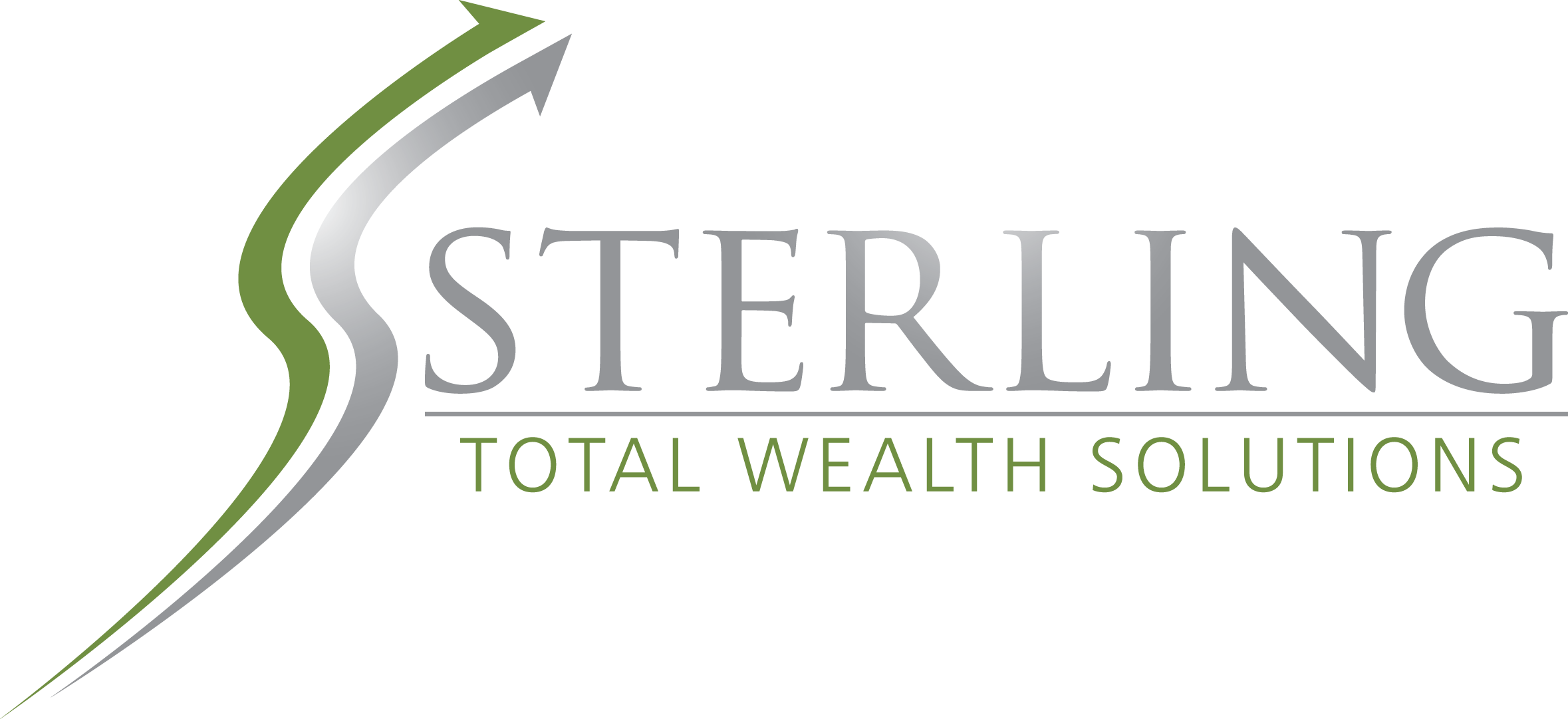In this month’s recap: Stocks notched a solid gain, fueled by a succession of positive economic reports and a strong start to the first-quarter earnings season.
Monthly Economic Update
Monthly Economic Update | Presented by Sterling Total Wealth Solutions | May 2021
U.S. Markets
A succession of robust economic reports and a healthy start to the corporate earnings season helped spark an April rally on Wall Street.
The Dow Jones Industrial Average gained 2.71 percent while the Standard & Poor’s (S&P) 500 Index picked up 5.24 percent. The Nasdaq Composite led, climbing 5.40 percent.1
Signs of Recovery
Stocks raced ahead in the first half of the month, lifted by multiple signs of economic recovery, including an impressive jobs report, a jump in retail sales, and a pick up in housing starts.2,3,4
The accelerating pace of vaccinations helped investor sentiment in the U.S. However, overseas vaccine distribution struggles and the suspension of a COVID-19 vaccine also tested investors last month.
Earnings Power
Coming into April, investors were anxious to see what first-quarter profit reports would hold. Corporate America did not disappoint.
S&P 500 companies appeared poised to report the third-highest net profit margin since tracking began in 2008. With 40% of S&P 500 index companies reporting, earnings-per-share growth (EPS) is now estimated to be 29.3%, well ahead of the 12.2% EPS growth rate that analysts had expected at the start of the year.5,6
Stocks mostly moved sideways in the second half of April, but they managed to hold onto the earlier gains, providing investors with a solid month of performance.
Sector Scorecard
Every industry sector contributed to April’s positive results, with gains in Communication Services (+8.35 percent), Consumer Discretionary (+7.92 percent), Consumer Staples (+0.36 percent), Energy (+1.69 percent), Financials (+7.37 percent), Health Care (+3.50 percent), Industrials (+4.34 percent), Materials (+5.68 percent), Real Estate (+6.71 percent), Technology (+7.31 percent), and Utilities (+3.20 percent).7
What Investors May Be Talking About in May
Many investors appear guarded and concerned that the bull market may be tested in the near term.
The Fed’s position has been that any inflation will be transitory, requiring no change to its monetary stance. However, the biggest worry for investors is that the Fed may be misreading the current rate of inflation.
Transitory or Layered?
Some investors see inflation layered into the economy, from the prices of crops and lumber to metals and industrial products, and worry it may not be transitory.
As such, expect investors to look for the persistence of inflation over the next several months while focusing on the consumer price index, the producer price index, and specific supply inputs, such as the prices of semiconductors, raw materials, and base metals.
World Markets
Overseas markets were lifted by signs of economic recovery in Europe, solid corporate earnings, and some progress by EU countries in vaccine distribution. For the month, the MSCI-EAFE Index rose 3.79 percent.8
European markets moved higher, with gains in the U.K. (+3.82 percent), France (+3.33), and Germany (+0.85 percent).9
Pacific Rim stocks were mixed, with Australia picking up 3.46 percent, Hang Seng gaining 1.22 percent, and Japan slipping 1.25 percent.10
Indicators
Gross Domestic Product: Economic growth surged, with GDP posting a 6.4 percent annualized growth rate in the initial reading of first quarter economic activity.11
Employment: Employers added 916,000 jobs in March, bolstered by a strong hiring rebound in the leisure and hospitality industry. It was the largest jump in new payrolls since August 2020. The unemployment rate dropped to 6.0 percent.12
Retail Sales: Consumer spending surged in March, jumping 9.8 percent on the strength of strong sales in sporting goods, clothing, electronics, and restaurants and bars.13
Industrial Production: Output by the nation’s manufacturers, miners, and utilities rose 1.4 percent.14
Housing: Housing starts rose 19.4 percent in March. On a year-over-year basis, housing starts were up 34 percent from March 2020.15
Existing home sales declined 3.7 percent. Inventory dropped 28.2 percent from a year earlier.16
Sales of new homes jumped by 20.7 percent from February and by more than 66 percent from last March, reaching levels not seen since 2006.17
Consumer Price Index: Prices rose in March, climbing 0.6 percent, leaving the year-over-year increase at 2.6 percent. The acceleration in the inflation rate was not unexpected as prices are coming off pandemic-muted levels.18
Durable Goods Orders: Durable goods orders increased by 0.5 percent in March. Excluding the volatile transportation sector, orders rose by 1.6 percent.19
TIP OF THE MONTH

Do you need several credit cards? Maybe not, especially if you don’t use some of them. Unused credit cards can negatively affect you if you apply for a mortgage or personal loan as lenders look at your “available credit” (used and unused) to decide if you are overextended.
The Fed
The Federal Reserve announced that its current monetary policies would remain unchanged until the labor market has fully recovered and inflation met its goal of averaging 2 percent.20
“Amid progress on vaccinations and strong policy support, indicators of economic activity and employment have strengthened,” said Federal Reserve Officials in a prepared statement following the two-day policy meeting which ended on April 28.
|
MARKET INDEX |
Y-T-D CHANGE |
April 2021 |
|
DJIA |
10.68% |
2.71% |
|
NASDAQ |
8.34% |
5.40% |
|
S&P 500 |
11.32% |
5.24% |
|
|
||
|
BOND YIELD |
Y-T-D |
April 2021 |
|
10 YR TREASURY |
0.71% |
1.63% |
Sources: Yahoo Finance, April 30, 2021
The market indexes discussed are unmanaged and generally considered representative of their respective markets. Individuals cannot directly invest in unmanaged indexes. Past performance does not guarantee future results. U.S. Treasury Notes are guaranteed by the federal government as to the timely payment of principal and interest. However, if you sell a Treasury Note prior to maturity, it may be worth more or less than the original price paid.
QUOTE OF THE MONTH

“My best successes came on the heels of failures.”
Barbara Corcoran
THE MONTHLY RIDDLE

This is an unusual paragraph. How quickly can you find out what is unusual about it? It looks so plain you would think nothing was wrong with it. In fact, nothing is wrong with it. It is unusual, though. Study it, and think about it, but you still may not find anything odd. What is missing from it?
LAST MONTH’S RIDDLE: A rope ladder hangs over the side of a docked ship and dips into the water. The rungs are 15.75″apart, all equally distanced. At low tide, two of the ladder’s rungs are underwater. At high tide, which is exactly 3.5’above low tide, how many rungs will be underwater?
ANSWER: Two. Although the tide rises three and a half feet, the ship also rises the same amount. So there will be no change in the number of rungs under water.
Securities offered through Registered Representatives of Cambridge Investment Research, Inc., a Broker/Dealer, Member FINRA/SIPC. Advisory services offered through Cambridge Investment Research Advisors, Inc., a Registered Investment Advisor. Sterling Total Wealth Solutions and Cambridge are not affiliated.
To learn more about Sterling Total Wealth Solutions, visit us on the web at www.sterlingtotalwealthsolutions.com
Know someone who could use information like this? Please feel free send us their contact information via phone or email. (Don’t worry – we’ll request their permission before adding them to our mailing list.)
This material was prepared by MarketingPro, Inc., and does not necessarily represent the views of the presenting party, nor their affiliates. The information herein has been derived from sources believed to be accurate. Please note – investing involves risk, and past performance is no guarantee of future results. Investments will fluctuate and when redeemed may be worth more or less than when originally invested. This information should not be construed as investment, tax or legal advice and may not be relied on for the purpose of avoiding any Federal tax penalty. This is neither a solicitation nor recommendation to purchase or sell any investment or insurance product or service, and should not be relied upon as such. All market indices discussed are unmanaged and are not illustrative of any particular investment. Indices do not incur management fees, costs, or expenses. Investors cannot invest directly in indices. All economic and performance data is historical and not indicative of future results. The Dow Jones Industrial Average is a price-weighted index of 30 actively traded blue-chip stocks. The NASDAQ Composite Index is a market-weighted index of all over-the-counter common stocks traded on the National Association of Securities Dealers Automated Quotation System. The Standard & Poor’s 500 (S&P 500) is a market-cap weighted index composed of the common stocks of 500 leading companies in leading industries of the U.S. economy. The Russell 2000 Index measures the performance of the small-cap segment of the U.S. equity universe. The CBOE Volatility Index® (VIX®) is a key measure of market expectations of near-term volatility conveyed by S&P 500 stock index option prices. NYSE Group, Inc. (NYSE:NYX) operates two securities exchanges: the New York Stock Exchange (the “NYSE”) and NYSE Arca (formerly known as the Archipelago Exchange, or ArcaEx®, and the Pacific Exchange). NYSE Group is a leading provider of securities listing, trading and market data products and services. The New York Mercantile Exchange, Inc. (NYMEX) is the world’s largest physical commodity futures exchange and the preeminent trading forum for energy and precious metals, with trading conducted through two divisions – the NYMEX Division, home to the energy, platinum, and palladium markets, and the COMEX Division, on which all other metals trade. The SSE Composite Index is an index of all stocks (A shares and B shares) that are traded at the Shanghai Stock Exchange. The CAC-40 Index is a narrow-based, modified capitalization-weighted index of 40 companies listed on the Paris Bourse. The FTSEurofirst 300 Index comprises the 300 largest companies ranked by market capitalisation in the FTSE Developed Europe Index. The FTSE 100 Index is a share index of the 100 companies listed on the London Stock Exchange with the highest market capitalization. Established in January 1980, the All Ordinaries is the oldest index of shares in Australia. It is made up of the share prices for 500 of the largest companies listed on the Australian Securities Exchange. The S&P/TSX Composite Index is an index of the stock (equity) prices of the largest companies on the Toronto Stock Exchange (TSX) as measured by market capitalization. The Hang Seng Index is a free float-adjusted market capitalization-weighted stock market index that is the main indicator of the overall market performance in Hong Kong. The FTSE TWSE Taiwan 50 Index is a capitalization-weighted index of stocks comprises 50 companies listed on the Taiwan Stock Exchange developed by Taiwan Stock Exchange in collaboration with FTSE. The MSCI World Index is a free-float weighted equity index that includes developed world markets and does not include emerging markets. The Mexican Stock Exchange, commonly known as Mexican Bolsa, Mexbol, or BMV, is the only stock exchange in Mexico. The U.S. Dollar Index measures the performance of the U.S. dollar against a basket of six currencies. Additional risks are associated with international investing, such as currency fluctuations, political and economic instability and differences in accounting standards. This material represents an assessment of the market environment at a specific point in time and is not intended to be a forecast of future events, or a guarantee of future results. MarketingPro, Inc. is not affiliated with any person or firm that may be providing this information to you. The publisher is not engaged in rendering legal, accounting or other professional services. If assistance is needed, the reader is advised to engage the services of a competent professional.
CITATIONS:
- The Wall Street Journal, April 30, 2021
- CNBC.com, April 2, 2021
- CNBC.com, April 15, 2021
- Reuters.com, April 16, 2021
- FactSet.com, April 26, 2021
- EarningsScout, April 30, 2021
- FactSet.com, April 30, 2021
- MSCI.com, April 30, 2021
- MSCI.com, April 30, 2021
- MSCI.com, April 30, 2021
- The Wall Street Journal, April 29, 2021
- CNBC.com, April 2, 2021
- The Wall Street Journal, April 15, 2021
- FederalReserve.gov, April 15, 2021
- Reuters.com, April 16, 2021
- CNBC.com, April 22, 2021
- YahooNews.com, April 23, 2021
- The Wall Street Journal, April 13, 2021
- The Wall Street Journal, April 26, 2021
- The Wall Street Journal, April 28, 2021
